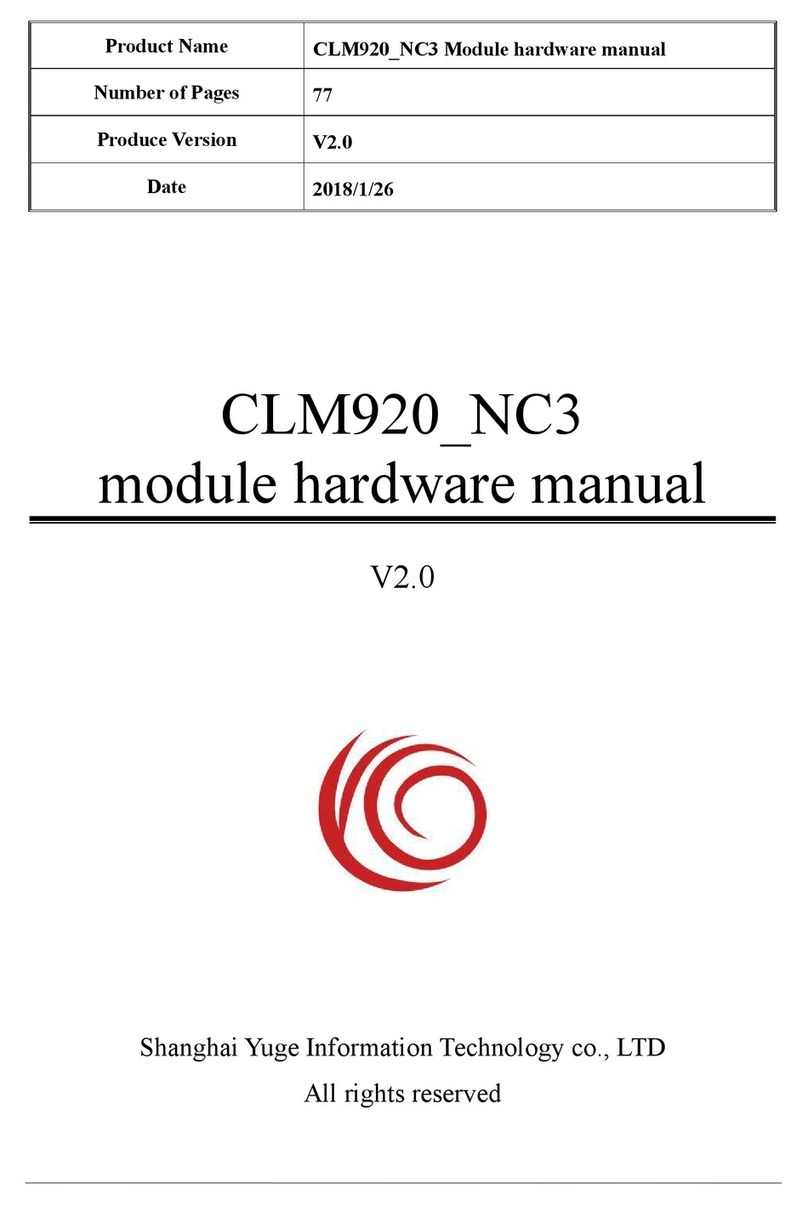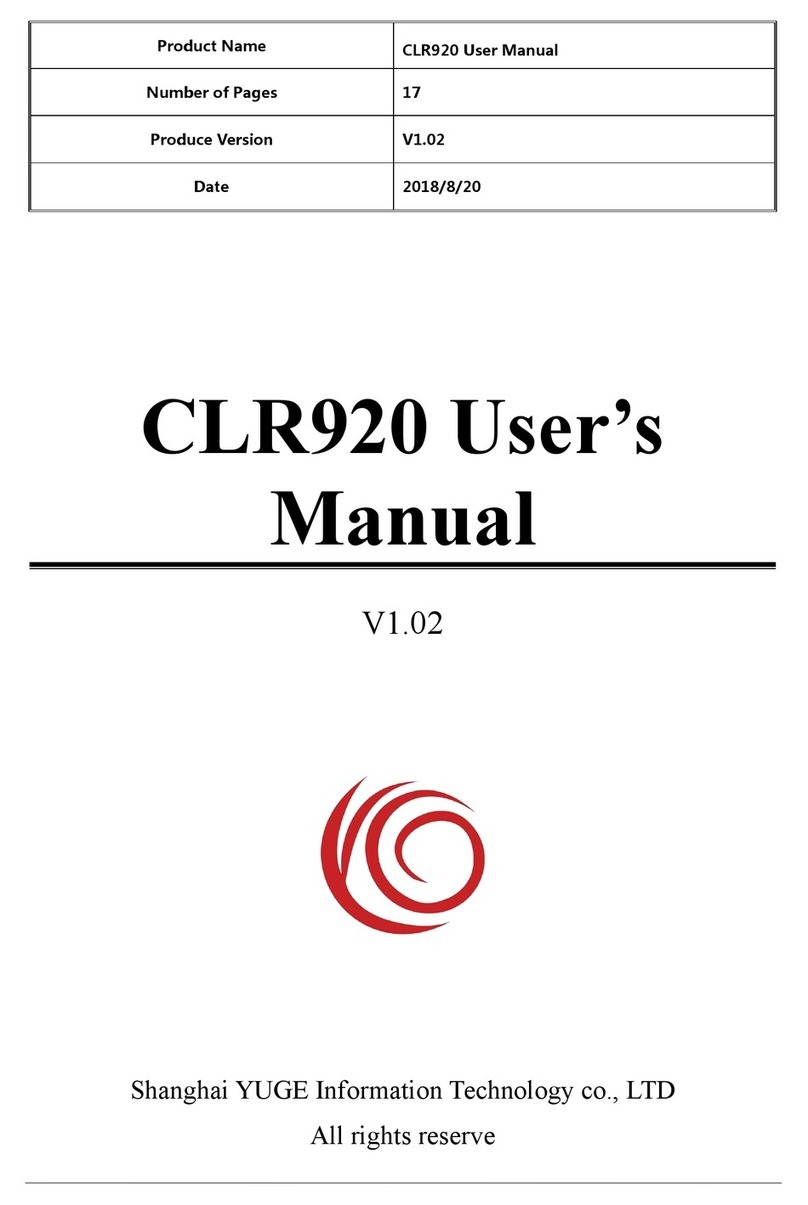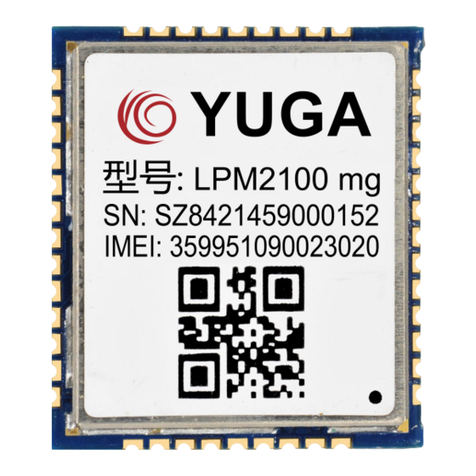
LPM2100 bt NB Module Hardware Usage Guide
Shanghai Yuge Information Technology Co., Ltd.
Contents
Chapter 1. Introduction...........................................................................................................- 7 -
Chapter2. Module review....................................................................................................... - 8 -
2.1 Module introduction................................................................................................. - 8 -
2.2 Main performance.................................................................................................... - 9 -
2.3 Module functional block diagram...........................................................................- 11 -
2.4 Module working mode............................................................................................- 11 -
Chapter 3. Interface application description.........................................................................- 13 -
3.1 Chapter overview....................................................................................................- 13 -
3.2 Module interface.....................................................................................................- 13 -
3.2.1 LPM2100 bt Pin map............................................................................ - 13 -
3.2.2. Module pin description...............................................................................- 14 -
3.3 Power interface.......................................................................................................- 18 -
3.4 VDD_EXT Voltage output.................................................................................. - 19 -
3.5 Switching machine reset mode...............................................................................- 19 -
3.5.1 Boot............................................................................................................. - 19 -
3.5.2 Boot timing..................................................................................................- 19 -
3.5.3 Module shutdown........................................................................................ - 20 -
3.5.3 Reset control................................................................................................- 20 -
3.6 UART interface...................................................................................................... - 22 -
3.6.1 Serial application circuit..............................................................................- 23 -
3.7 Power saving technology........................................................................................- 24 -
3.7.1 Power Saving Technology (PSM)............................................................... - 24 -
3.7.2 Power Saving Technology (DRX)...............................................................- 25 -
3.7.3 Power saving technology (eDRX)...............................................................- 25 -
3.7.4 WAKEUP interface...................................................................................- 26 -
3.7.5 WAKEUP_OUT interface........................................................................ - 26 -
3.8 SIM interface.......................................................................................................... - 27 -
3.8.1 SIM card reference circuit........................................................................... - 27 -
3.8.2 SIM_DECT Hot swap reference design *................................................... - 28 -
3.9 ADC interface.........................................................................................................- 29 -
3.10 SPI interface......................................................................................................... - 30 -
3.11 I2C bus..................................................................................................................- 30 -
3.12 Network indication interface................................................................................ - 31 -


































